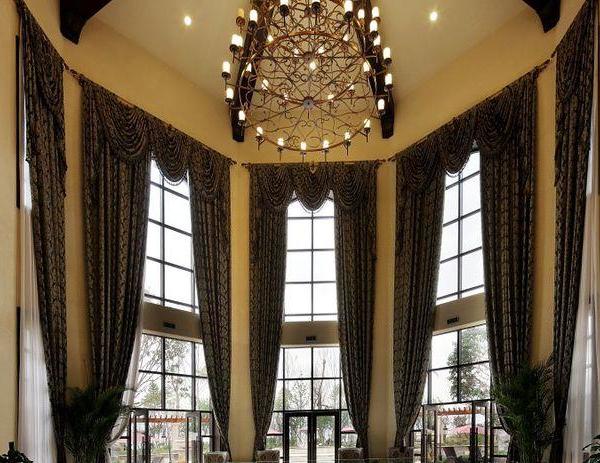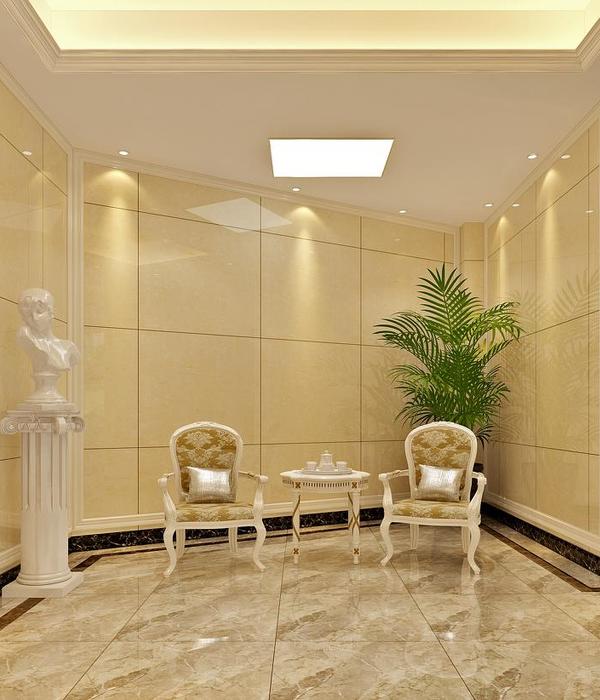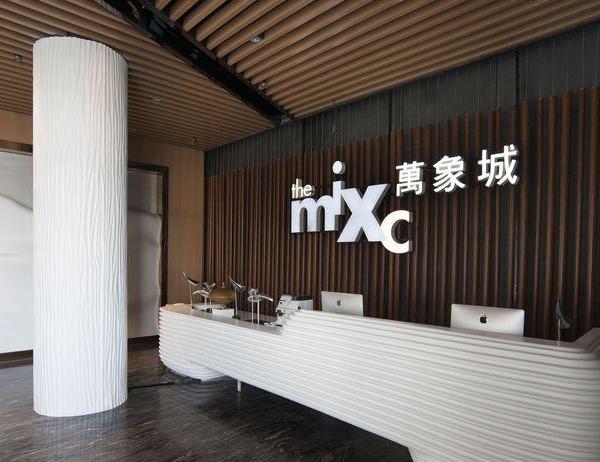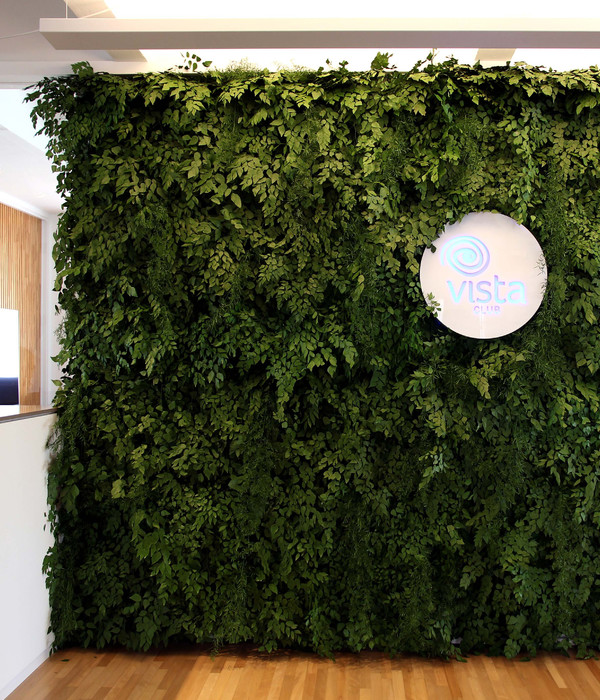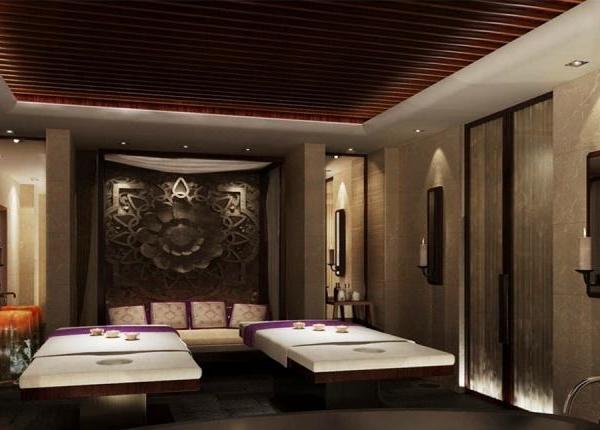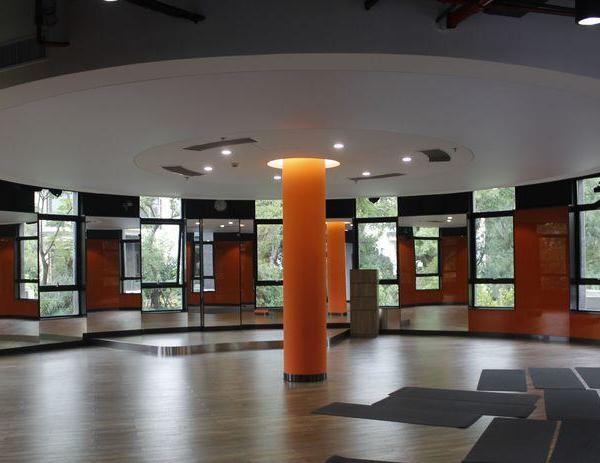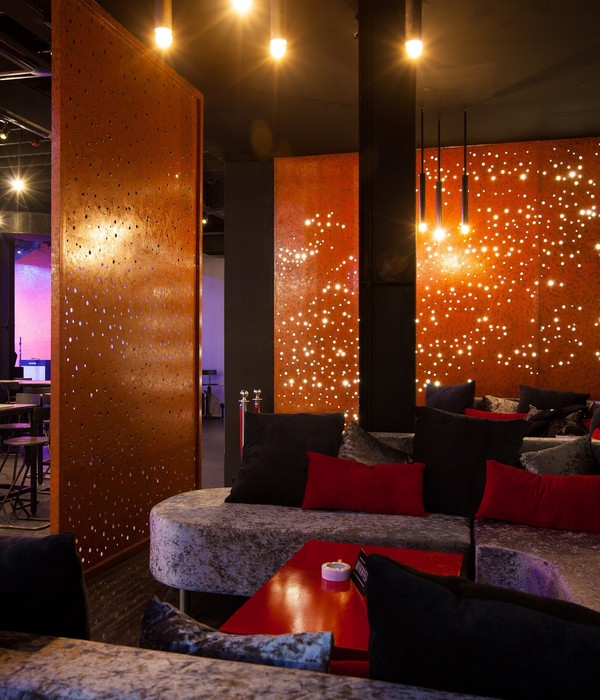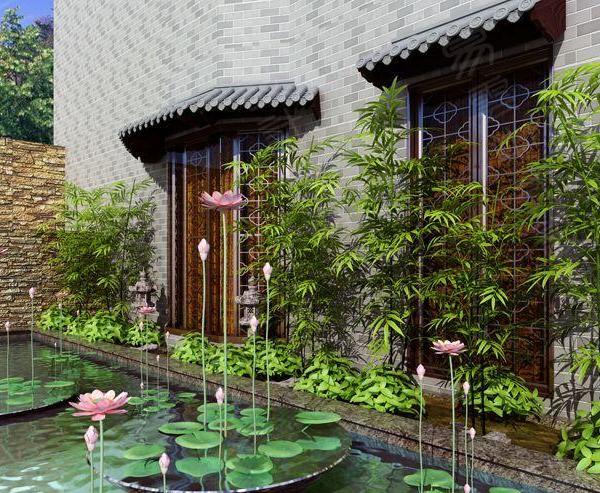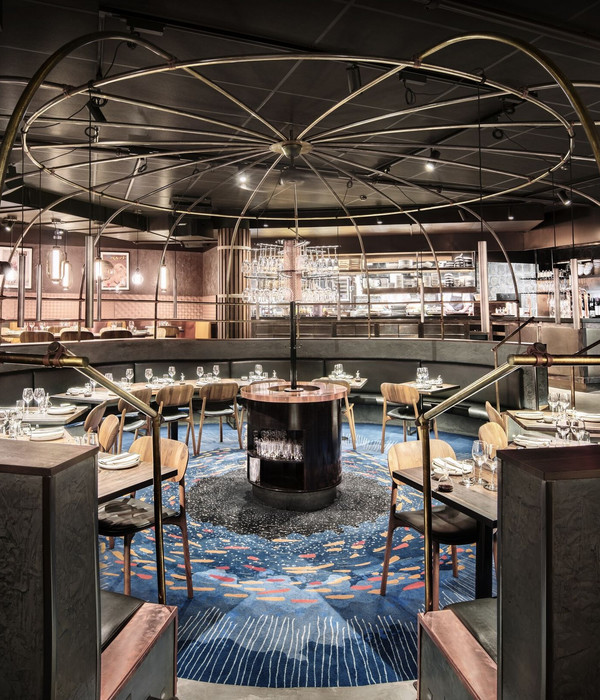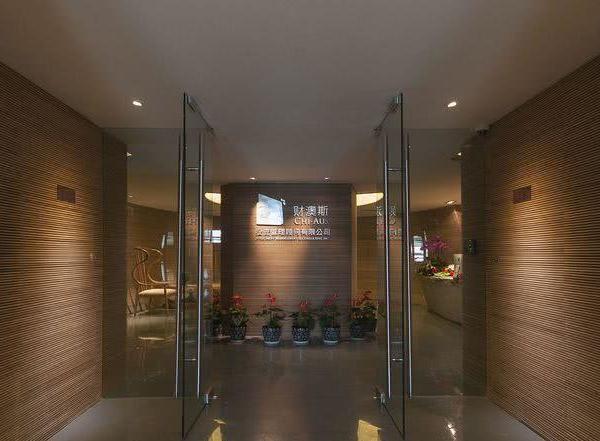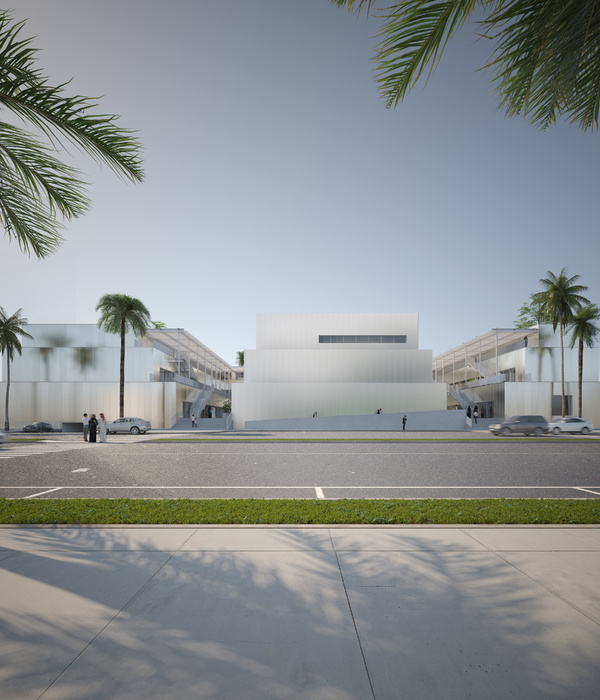该项目将来自美国西海岸文化的蓝瓶咖啡店融入到位于京都南禅寺附近的传统联排住宅当中。与此同时,设计师专注于延续其他蓝瓶咖啡店的设计理念,即在空间中“创造出平等的关系”。
▼町屋临街面,overview of the machiya from street © Takumi Ota
▼町屋前院,front yard of the machiya © Takumi Ota
▼通往咖啡店的走廊,corridor towards cafe © Takumi Ota
Upon integrating Blue Bottle Coffee –– coming from America’s West Coast culture –– with the machiya (traditional townhouse) located along the approach way to Nanzenji Temple in Kyoto, we continued to focus on our design concept for all of the Blue Bottle Coffee shops we designed, which is to “create equal relationships” throughout the space.
▼庭院,courtyard © Takumi Ota
▼咖啡店外观,outlook of the café © Takumi Ota
▼庭院中的半开放座位,semi-open seats in the courtyard © Takumi Ota
建筑原有的地板高出地面50厘米,是日本传统建筑的特色。改造中地板被拆除,以地面为建筑新的地平。为了在视觉上将室外的鹅卵石地面延伸至室内,建筑室内采用了有同种鹅卵石花纹的水磨石地面。遵循与其他店铺相同的理念及来此日本与美国的文化背景,京都咖啡店柜台内的地板与顾客用餐区持平,以此保证员工与顾客拥有相同高度的视线。水磨石板不仅被用作地板,还在某些区域凸起成为柜台及长凳。
▼咖啡店室内概览,overview of interior space © Takumi Ota
▼一层室内,the first floor © Takumi Ota
▼木质餐牌,wooden menu board © Takumi Ota
The existing floor, raised 50cm above the ground conforming to a characteristic style of traditional Japanese architecture, was demolished to make a new floor level with the ground. In order to visually continue the pebbled ground into the interior, terrazzo containing the same type of pebbles as the ground was used to finish the floor. The floor inside the counter is also level with the customer area to maintain the same eye level between customers and staff following the same concept as the other shops, while integrating Japanese and American cultures at the same time. The terrazzo floor not only serves as a floor but also elevates itself in some places to form counters and benches.
▼水磨石咖啡吧台,terrazzo café counter © Takumi Ota
▼吧台内地面与顾客区同高,使工作人员与顾客视线相平。Floor inside the counter is level with the customer area to maintain the same eye level between customers and staff. © Takumi Ota
连续的白色地板上减少放置一切不必要的设施,并且清除了建筑结构上多余的装饰,以展现建筑原有的屋顶结构及黏土墙。这间最初由两座独立建筑组成100年老宅如今被改造成若干大小变化的空间,但人们仍能从中看到岁月的痕迹。
▼清除修饰的建筑结构,structure stripped finishes © Takumi Ota
▼裸露的屋顶结构,exposed roof structure © Takumi Ota
The continuous white floor is stripped of all unnecessary things and the structure is stripped of existing finishes to expose the original roof structure and clay walls, and one can see traces of its100-year old history throughout the large, medium and small spaces in the structure originally composed of two separate buildings.
▼用餐区,充满岁月痕迹的黏土墙,dining area, clay walls with historical traces © Takumi Ota
▼黏土墙细节,detail of the clay walls © Takumi Ota
这间町屋(machiya)原有的两栋建筑被分别翻新为咖啡厅及商业建筑(MD Building)。建筑二层空间用作办公室,空间内不必要的墙壁全部被拆除并安装上玻璃,以保持上下层之间的视觉联系。
The machiya was originally composed of two buildings, which were respectively renovated into a cafe building and MD building this time. The second floor space accommodates the office, where all unnecessary walls are removed and is covered with glass to maintain visual connections between the lower and upper floors.
▼零售区,retail area © Takumi Ota
▼水磨石柜台,terrazzo counter © Takumi Ota
▼内庭院,courtyard © Takumi Ota
▼夜晚的咖啡厅,café at night © Takumi Ota
▼二层办公室内的灯光,light in the office on the second floor © Takumi Ota
▼平面,plan © Schemata Architects
▼剖面,section © Schemata Architects
Architects:Jo Nagasaka / Schemata Architects Project team:Yui Matsushita Address:64 Kusakawacho Nanzenji Sakyo-ku Kyoto Japan Usage:cafe, office Construction:TANK, Atelier Loöwe INC. Collaboration:SOUP DESIGN (sign); HOSHIZAKI TOKYO CO.,LTD, HOSHIZAKI KEIHAN CO.,LTD (kitchen); WHITELIGHT.Ltd (sound plan); Endo Lighting (lighting plan); Simple garden (plant plan) Floors:2 stories Site area: 452.98m² Building area: 217.88m² Total floor area: 324.38m² Merchandise building Total floor area: 128.82m² 1F: 93.91m² 2F: 34.91m² Cafe building Total floor area: 195.56m² 1F: 123.97m² 2F: 71.59m² Structure: Wood Completion: 3/2018 Open: 3/2018 Photo: Takumi Ota
{{item.text_origin}}

